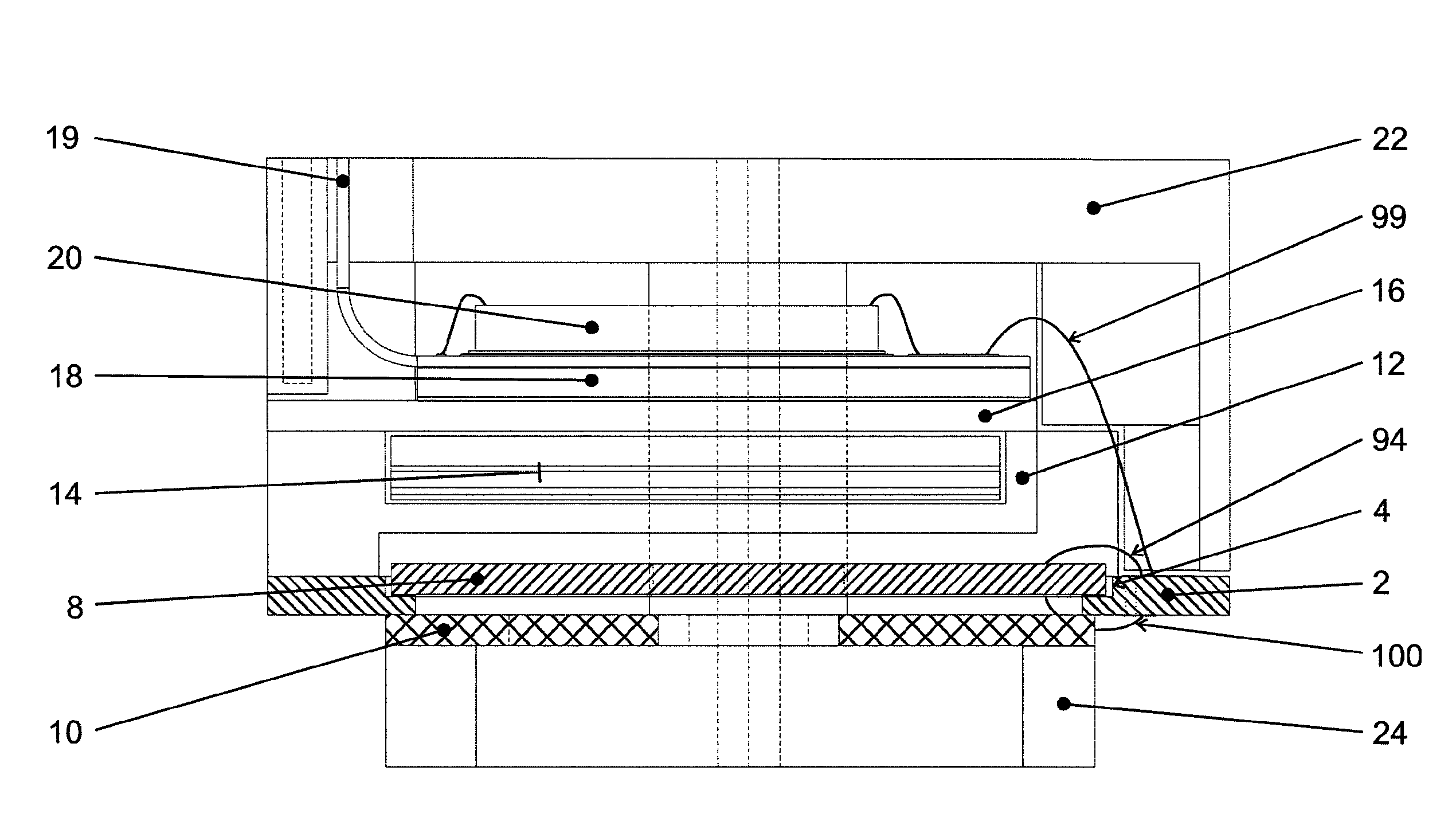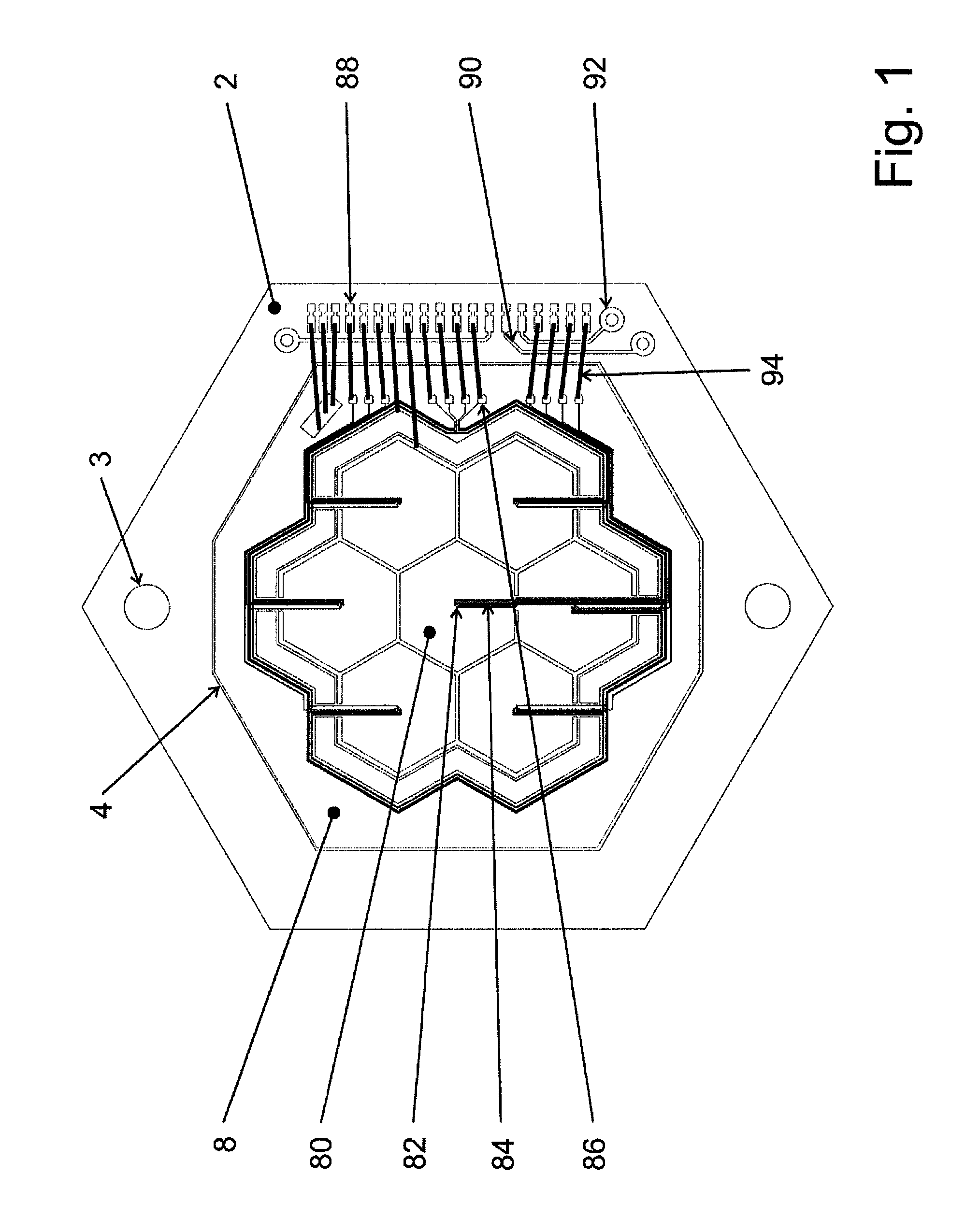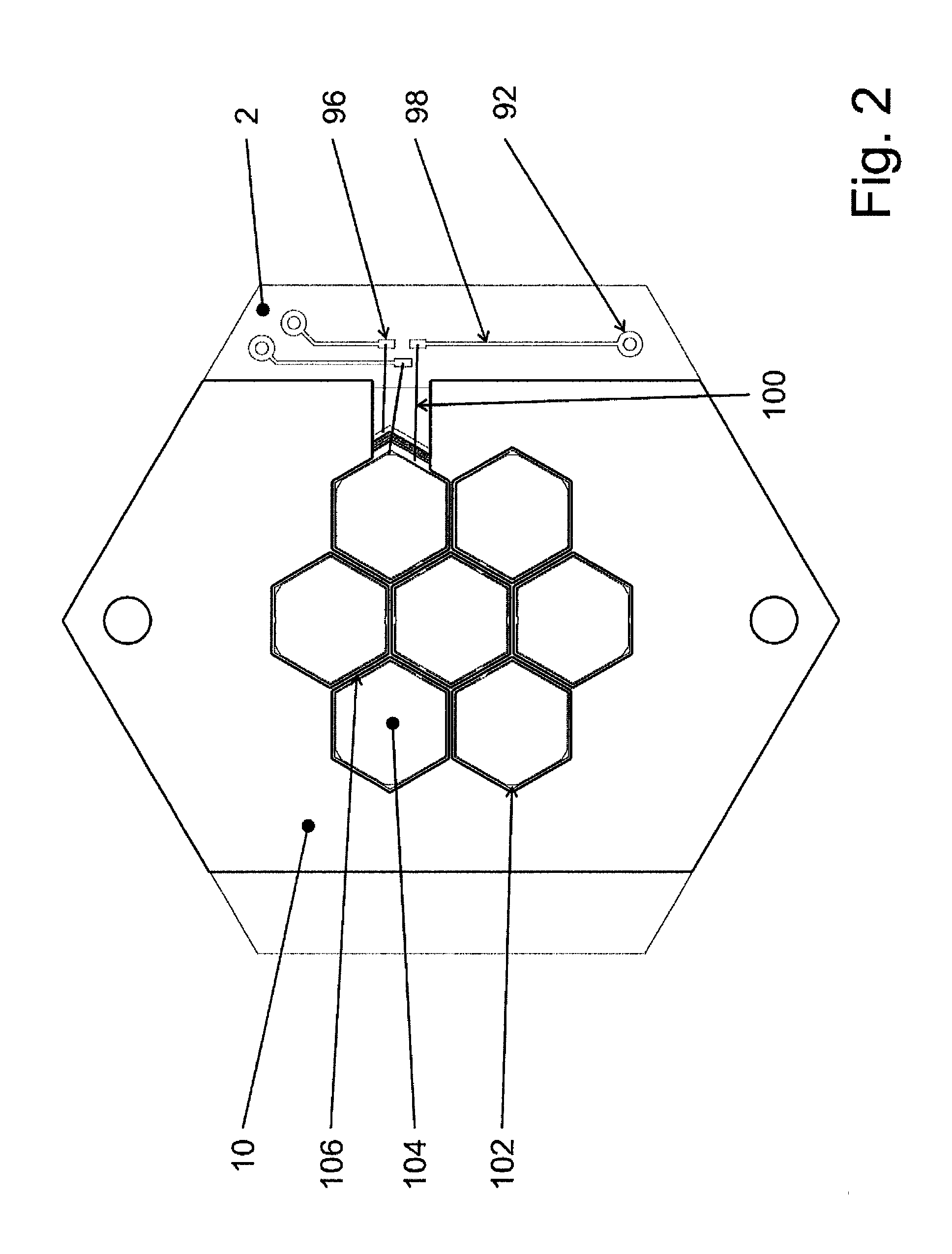X-ray detector module with a collimator
a detector module and collimator technology, applied in the direction of radiation intensity measurement, instruments, x/gamma/cosmic radiation measurement, etc., can solve the problems of low absorbance of such materials at relatively high energies, corrupt measurement, and insatiable signal-to-background ratio of known x-ray detector modules, so as to minimize the dead space
- Summary
- Abstract
- Description
- Claims
- Application Information
AI Technical Summary
Benefits of technology
Problems solved by technology
Method used
Image
Examples
Embodiment Construction
[0032]FIG. 1 shows a plan view of the basic carrier 2 with inserted sensor chip 8 in plan view from the direction of the remaining components of the X-ray detector module. FIG. 2 shows the plan view of the other side of the basic carrier 2, wherein the sensitive detector cells can be seen through the opening of the frame-type basic carrier 2 and the mask 10. The sensor chip 8 is accommodated with an accurate fit in the cutout 4 (see FIG. 3) of the basic carrier 2, whereby accurate positioning of the sensor chip 8 in the construction can be ensured.
[0033]The mask 10 is provided with ridges 106 which project into the opening of the frame-type basic carrier 2 and run over the sensor chip 8. Their course is configured such that they cover the boundary strips of adjacent silicon drift detector cells 80 which adjoin one another. The outer contour of the opening of the mask 10 is shaped in such a way that the outer edge regions of the outer silicon drift detector cells are covered by it, s...
PUM
 Login to View More
Login to View More Abstract
Description
Claims
Application Information
 Login to View More
Login to View More - R&D
- Intellectual Property
- Life Sciences
- Materials
- Tech Scout
- Unparalleled Data Quality
- Higher Quality Content
- 60% Fewer Hallucinations
Browse by: Latest US Patents, China's latest patents, Technical Efficacy Thesaurus, Application Domain, Technology Topic, Popular Technical Reports.
© 2025 PatSnap. All rights reserved.Legal|Privacy policy|Modern Slavery Act Transparency Statement|Sitemap|About US| Contact US: help@patsnap.com



